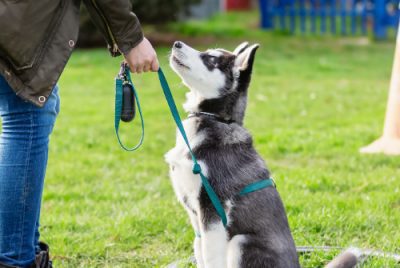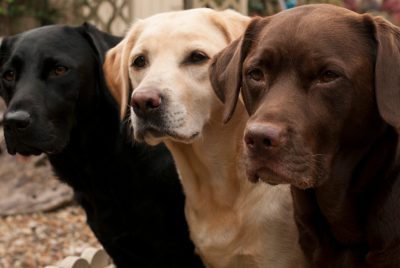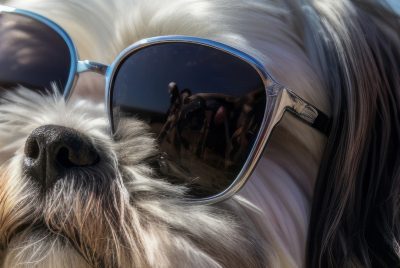Butt Sniffing Dogs
Post Disclaimer
We may earn a commission for purchases made using our links. Please see our Disclaimer to learn more.
Why do dogs sniff each other’s butts?
Dogs sniff each other’s butts as a way of gathering information about one another. The anal glands in a dog’s rear end produce unique scents that provide valuable insights into things like gender, health, and even emotional state. It’s their version of a handshake or introduction.
Have you ever witnessed your canine companion giving a rather ‘intrusive’ greeting to a fellow pooch? For us humans, this might seem like bizarre, even embarrassing behavior. However, for dogs, butt sniffing is an important communication ritual that allows them to gather information about each other, including their health, diet, and emotional state. This article explores why dogs sniff each other’s butts and what they learn from it, including information about their anal sacs, which are located near the anus and produce a unique scent that dogs use to communicate. Understanding dog communication, including the role of anal sacs, can help us better understand our furry friends and strengthen our bond with them.
Scents:
A dog’s world is dominated by smell and body language. Unlike us, dogs primarily communicate through scent, not sight or sound. They love a good smell, and it will tell them so much about the other dog.
Anal Glands:
Two small glands, known as anal glands, are key in these scent exchanges. Situated on either side of a dog’s anus, they secrete a unique cocktail of pheromones and small sacs that can relay a wealth of information to a nosy visitor.
The Canine Olfactory System
Sense of Smell: Dogs have an incredibly advanced olfactory system, making them superior sniffers. They possess up to 300 million olfactory receptors, compared to a paltry six million in humans. A dog’s sense of smell is so powerful that they can detect scents that are up to 100,000 times weaker than what humans can detect through their nostrils.
Jacobson’s Organ: Additionally, dogs have a special scent-detecting organ, the Jacobson’s organ, that humans lack. This allows them to detect pheromones, the chemical messengers involved in social communication. The Jacobson’s organ is a special organ, tubes typically on the roof of the mouth. Such organs are present in many vertebrates, like snakes and lizards. If you’re considering getting a puppy, it’s important to understand their unique abilities and senses.
The Art of Butt Sniffing
Encounter: On meeting another dog, a dog might show interest in sniffing its butt. This is a polite way to gather information and introduce themselves.
Sequence: This process follows a fairly standardized ritualistic sequence – approach, sniff, wagtail, and often, reciprocate. During the sniffing phase, dogs use their powerful sense of smell to gather information about their surroundings, including scents from the nasal cavity. It’s not uncommon for dogs to focus their sniffing on specific areas, such as another dog’s butt, to gather more information.
Tail Wags: The wagging tail during this process aids in scent dispersal, making the information ‘readable’. They are fanning the scent molecules to them, ahem.
What Dogs Learn from Sniffing
Identification: Each dog’s anal gland secretions are unique, thus providing vital information as an individual ‘scent ID’. Additionally, a dog’s nose is capable of detecting even the slightest fingerprint of a scent, making them valuable in search and rescue operations.
Health and Dietary Info: The pheromones can also indicate health status, recent diet, and more, which can be helpful when dogs meet for the first time.
Sexual Status: Dogs can determine the sex, reproductive status, and even the mood of their new acquaintance. This ability is particularly important when introducing male dogs and female dogs, as their reproductive status can impact the dynamics of the interaction.
Benefits of Butt Sniffing
Social Hierarchy: Sniffing helps establish the social hierarchy within canine communities, without resorting to aggression. In some cases, a dominant dog may use sniffing as a way to assert their position in the pack.
Conflict Avoidance: By ‘reading’ the pheromones, dogs can gauge if their new friend is aggressive, scared, or relaxed, and react accordingly. This is especially important for submissive dogs who may be more prone to conflict and need to be able to read the signals of other dogs to avoid potential confrontations. Understanding your dog’s temperament and body language can help prevent conflicts and ensure a safe and happy environment for all dogs.
Bonding and Communication: This ritual, which involves sniffing each other’s snouts, is a crucial part of dog-to-dog communication and bonding.
When Butt Sniffing Becomes Excessive
Identifying Excess: Sometimes, dogs can engage in excessive butt-sniffing, which could signal various health problems, including issues with their vomeronasal organ and rectum.
Managing Excessive Butt Sniffing
Intervention: Mild interventions can often resolve this issue.
Professional Help: If the behavior continues, it might be time to seek veterinary advice.
FAQs
Do all dogs engage in butt sniffing? Yes, almost all dogs engage in butt sniffing as it’s a normal and natural part of their social interactions and communication. Some dogs might be more enthusiastic about it than others due to their personality, the other dog’s scent, or their socialization history.
Can a dog’s diet affect its anal gland secretions? Yes, a dog’s diet can indeed affect their anal gland secretions. The quality of a dog’s diet can influence their overall health, including the health of their anal glands. For instance, a balanced diet can help ensure the secretions are normal, while a poor diet might lead to issues like impacted or infected anal glands, which can alter the scent.
What does a wagging tail during butt sniffing indicate? A wagging tail during butt sniffing typically indicates that a dog is relaxed and open to the interaction. The wagging tail also helps to spread the anal gland secretions, making it easier for the other dog to gather information.
What should I do if my dog is excessively butt-sniffing? If your dog is excessively butt sniffing, it could indicate a behavioral issue or a health problem in the dog being sniffed, such as an infection or disease in the anal glands. It’s best to consult with a veterinarian or a professional dog behaviorist to determine the cause and the appropriate course of action.
Can dogs sniff out diseases or health conditions in other dogs? Yes, dogs have an incredibly acute sense of smell that enables them to detect certain diseases or health conditions. Some dogs can even be trained to detect specific conditions in humans such as cancer, diabetes, or seizures. If your dog is persistently sniffing another dog or a specific area on them, it could indicate a health problem and a veterinary consultation would be advised.
Conclusion
In the canine world, butt sniffing is not just an acceptable form of greeting, but an intricate, information-laden communication mechanism. By ‘reading’ these chemical messages, dogs can learn a surprising amount about each other, thus facilitating social interactions and ensuring harmony within the pack.




